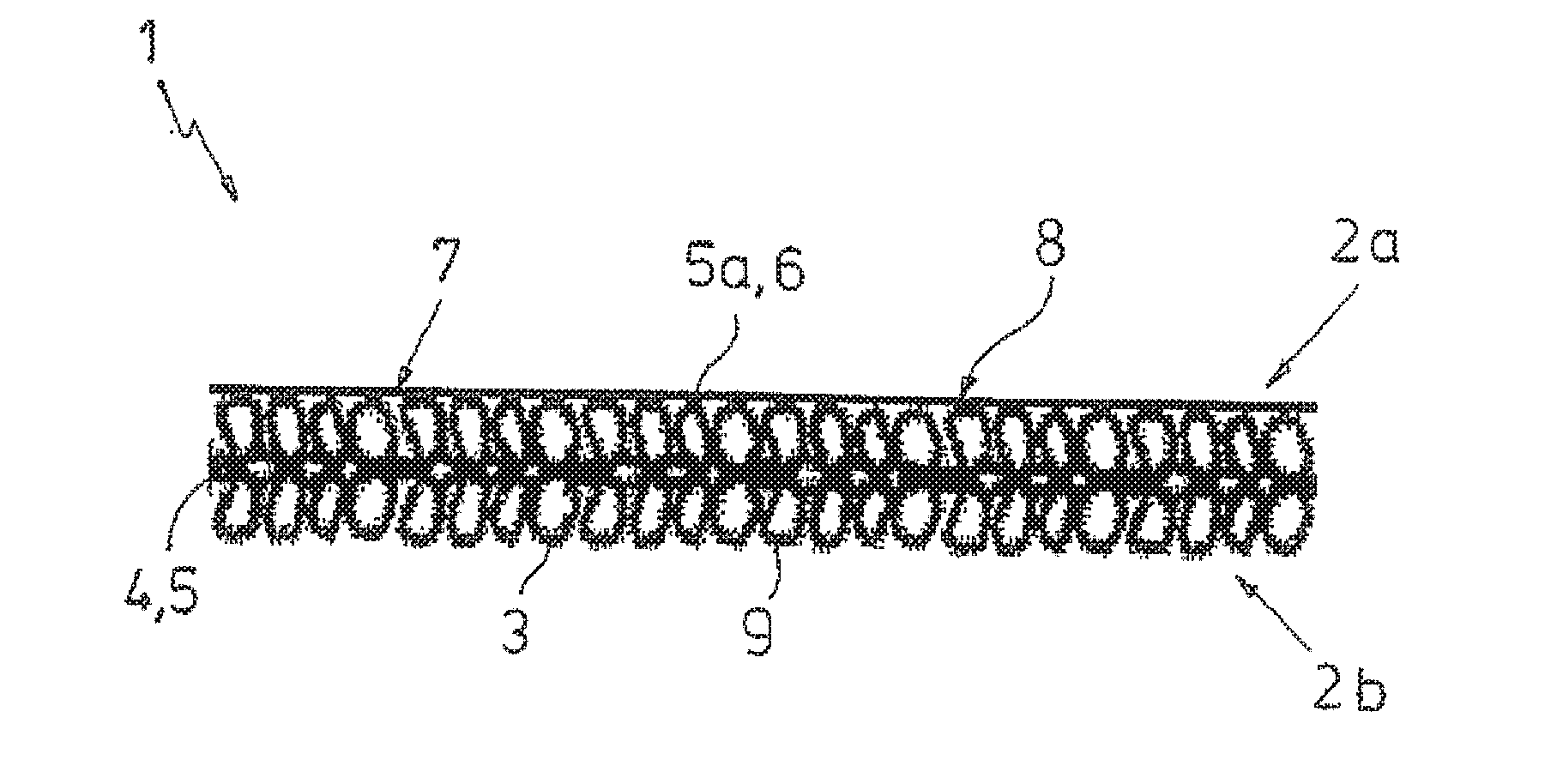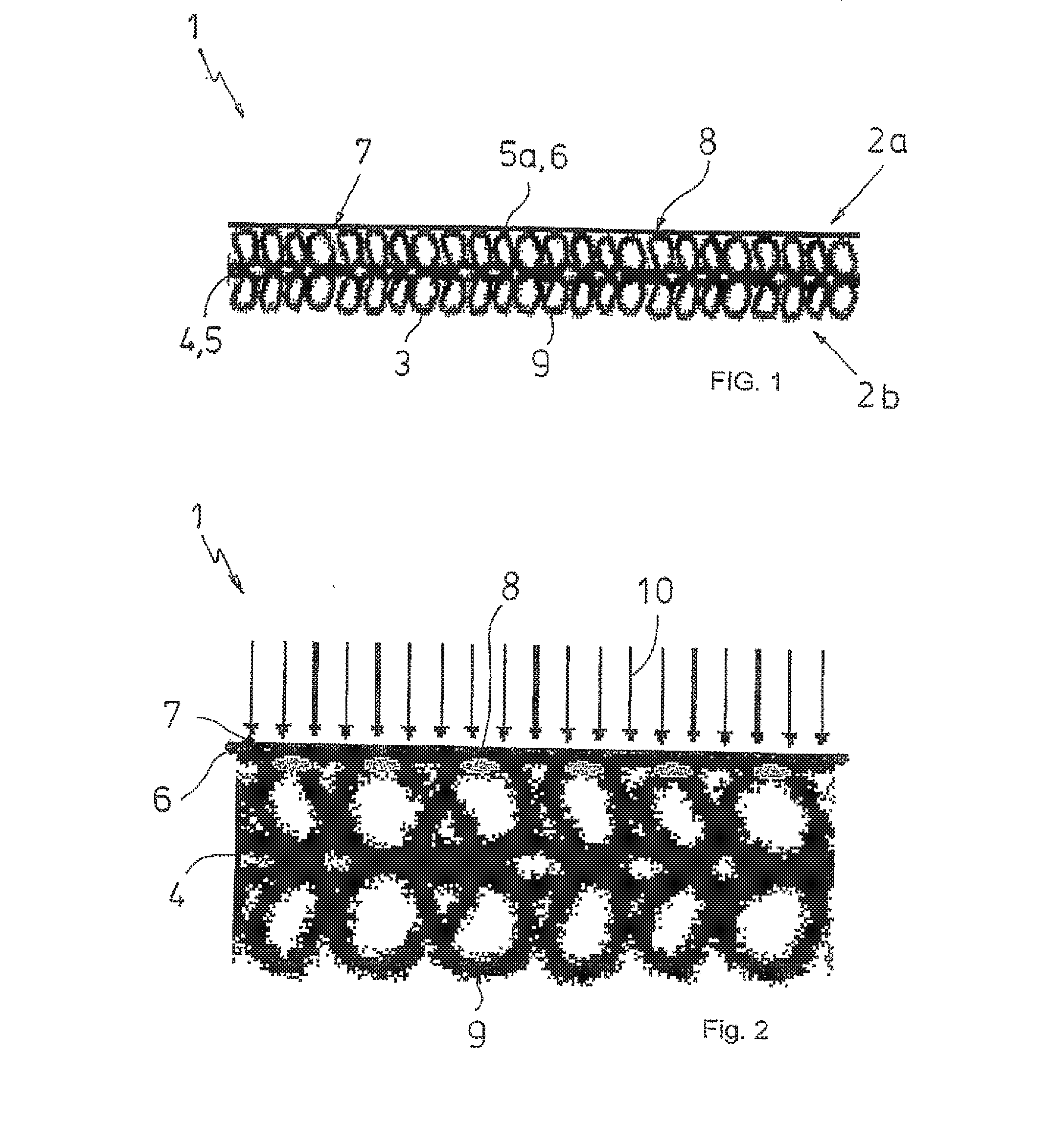Water vapor permeable, waterproof textile laminate and method for the production thereof
a technology of textile laminate and water vapor permeation, applied in the direction of lamination, application, layered products, etc., to achieve the effect of more flexural rigidity
- Summary
- Abstract
- Description
- Claims
- Application Information
AI Technical Summary
Benefits of technology
Problems solved by technology
Method used
Image
Examples
Embodiment Construction
[0048]FIG. 1 shows a water vapor permeable, waterproof textile laminate 1, preferably intended for further processing to obtain weather-proof clothing items, comprising two layers 2a, 2b made of planar web material, which are disposed on top of each other and bonded to each other, wherein an open fabric web 4 comprising polymer fiber threads 3 forms a top tier 5 and a film-like, water vapor permeable, waterproof thermoplastic membrane web 6 forms a bottom tier 5a. The polymer fiber threads 3 of the fabric web 4 comprise raised thread regions 7, which are held bearing against the membrane web 6 and / or are partially integrally fused with the membrane web 6. The membrane web 6 comprises fusion areas 8 for the raised thread regions 7 generated during the laser transmission welding method. The fabric web 4 is produced in the manner of a woven fabric, a knitted fabric, a warp-knitted fabric, an interlaced product, a stitched product, a non-woven fabric or a felt. The membrane web 6 bonded...
PUM
| Property | Measurement | Unit |
|---|---|---|
| thickness | aaaaa | aaaaa |
| thickness | aaaaa | aaaaa |
| water vapor permeable | aaaaa | aaaaa |
Abstract
Description
Claims
Application Information
 Login to View More
Login to View More - R&D
- Intellectual Property
- Life Sciences
- Materials
- Tech Scout
- Unparalleled Data Quality
- Higher Quality Content
- 60% Fewer Hallucinations
Browse by: Latest US Patents, China's latest patents, Technical Efficacy Thesaurus, Application Domain, Technology Topic, Popular Technical Reports.
© 2025 PatSnap. All rights reserved.Legal|Privacy policy|Modern Slavery Act Transparency Statement|Sitemap|About US| Contact US: help@patsnap.com



